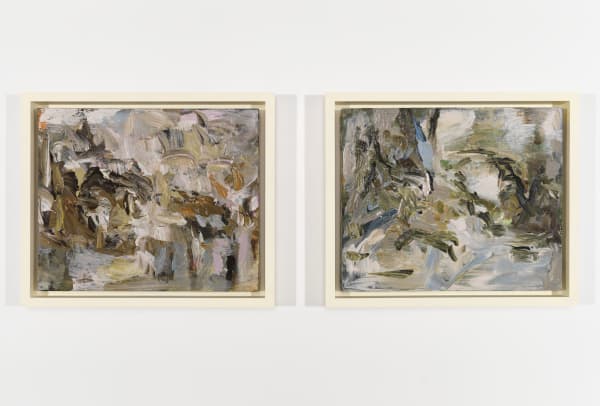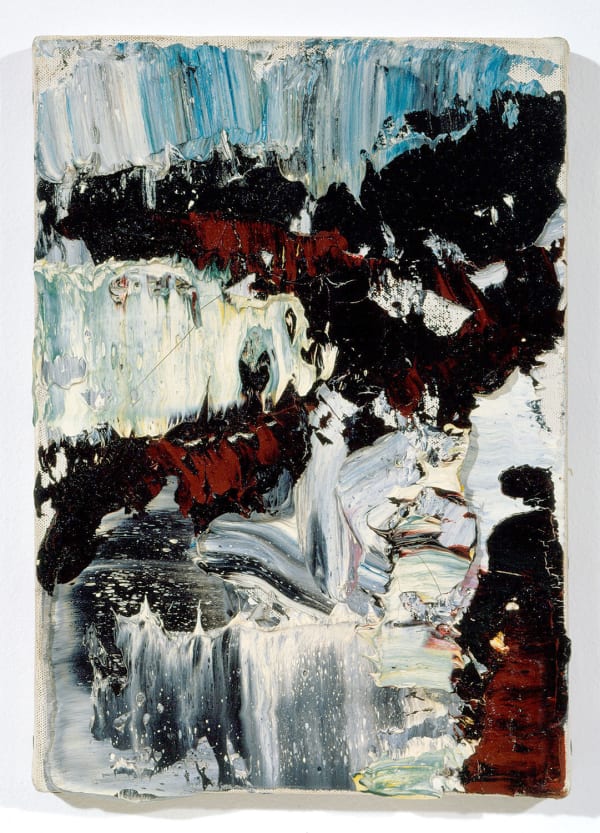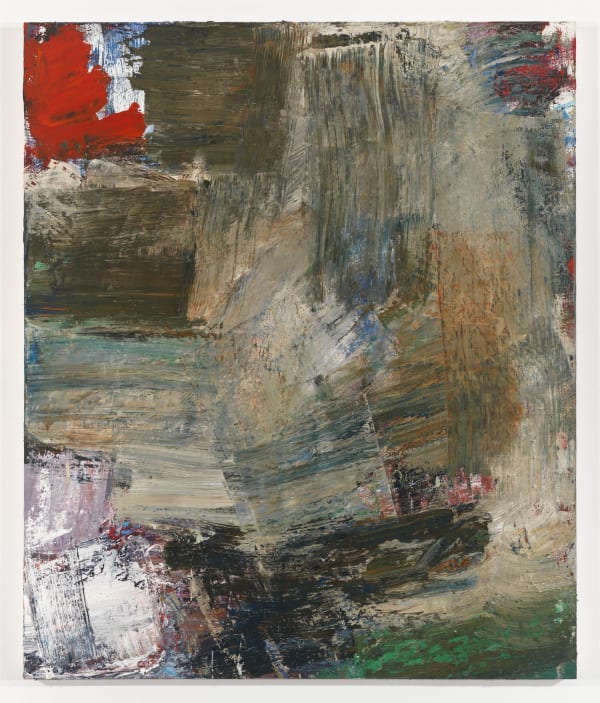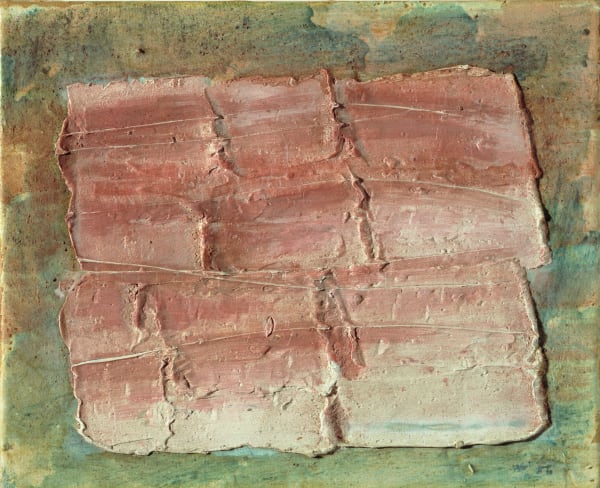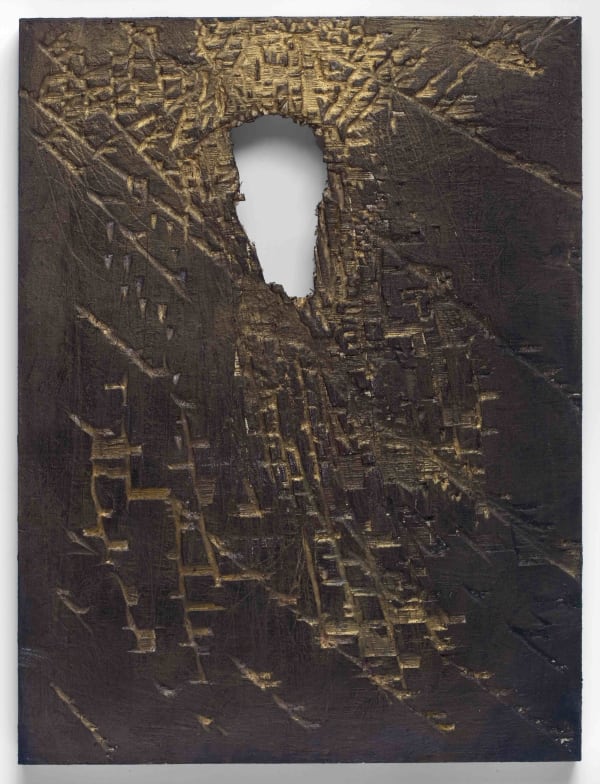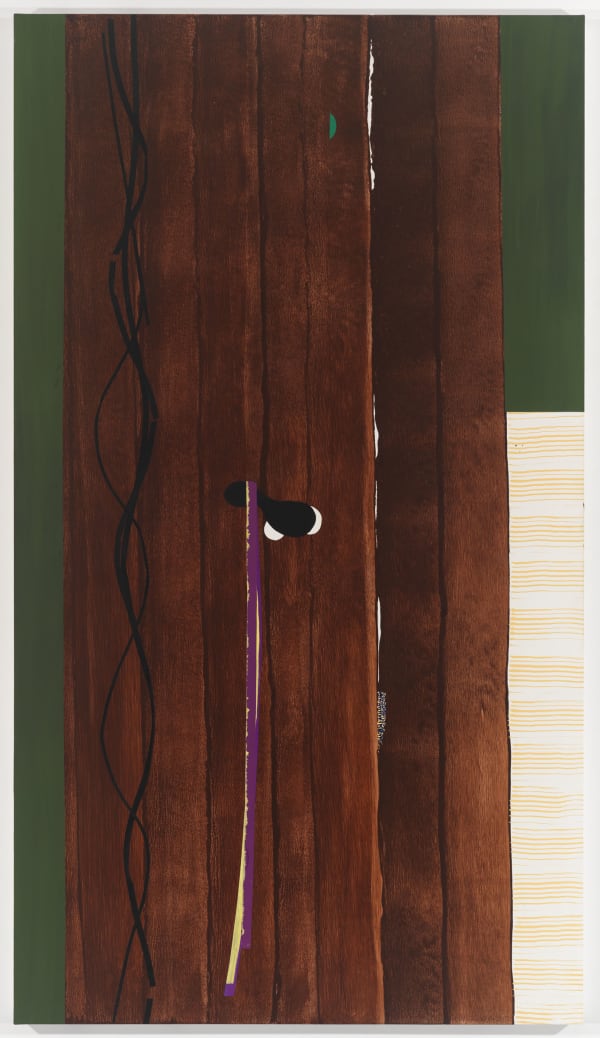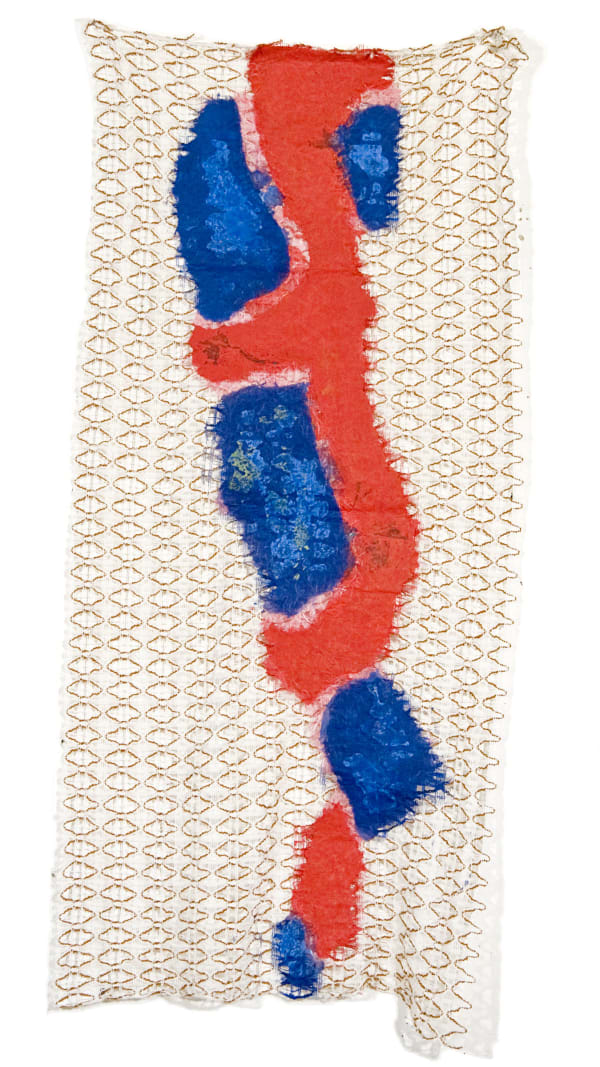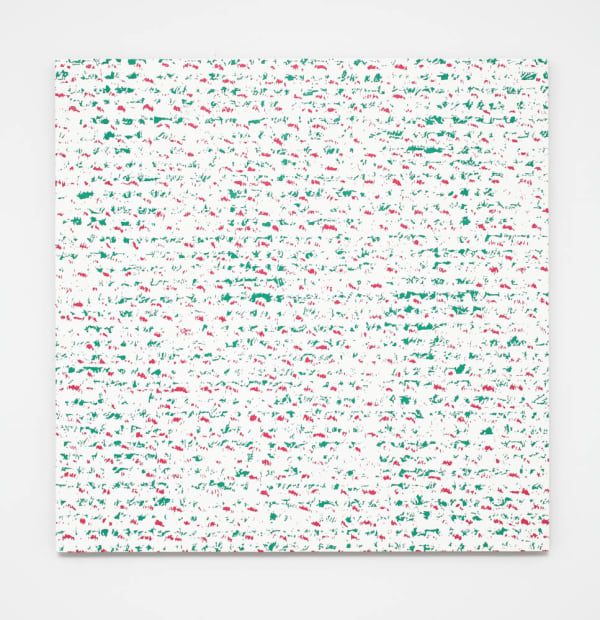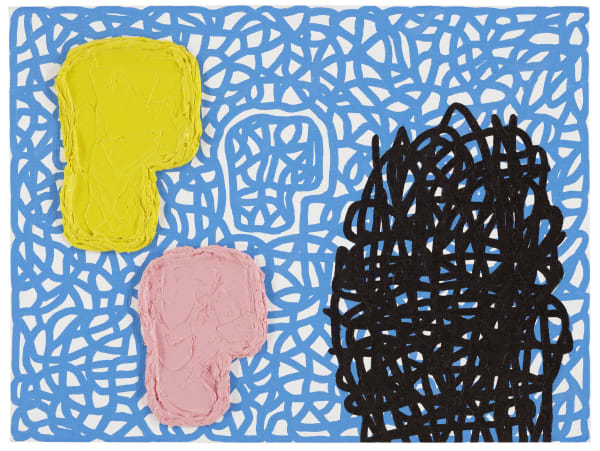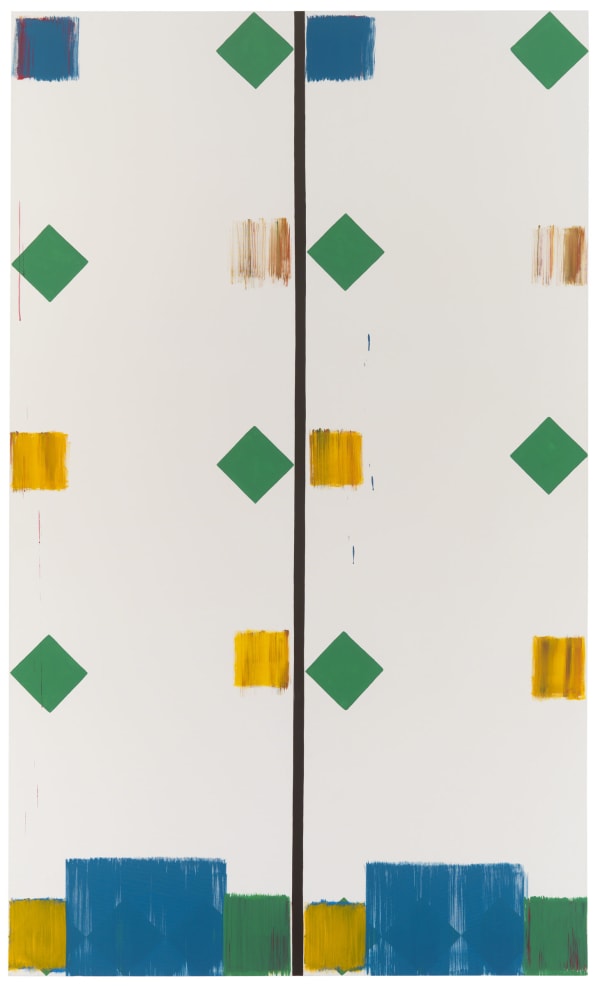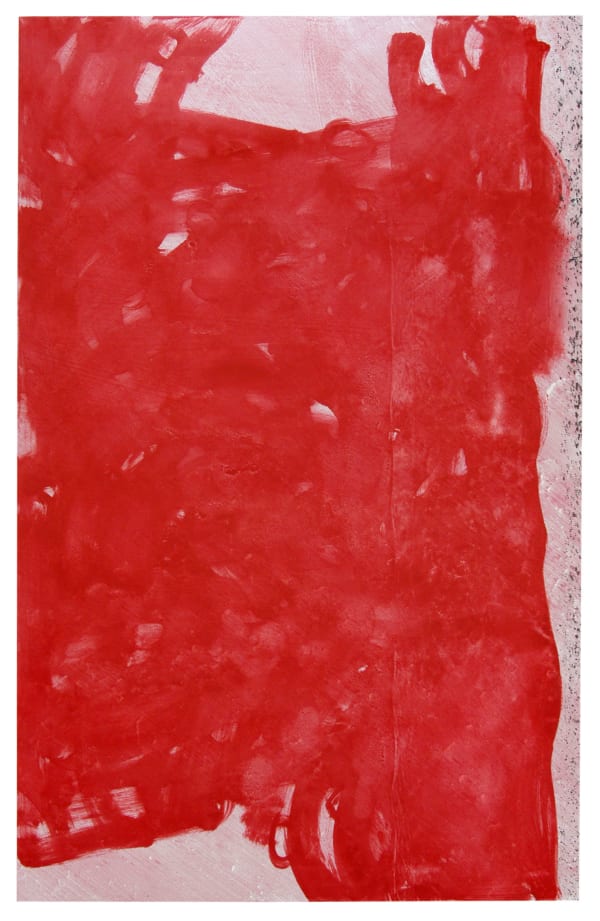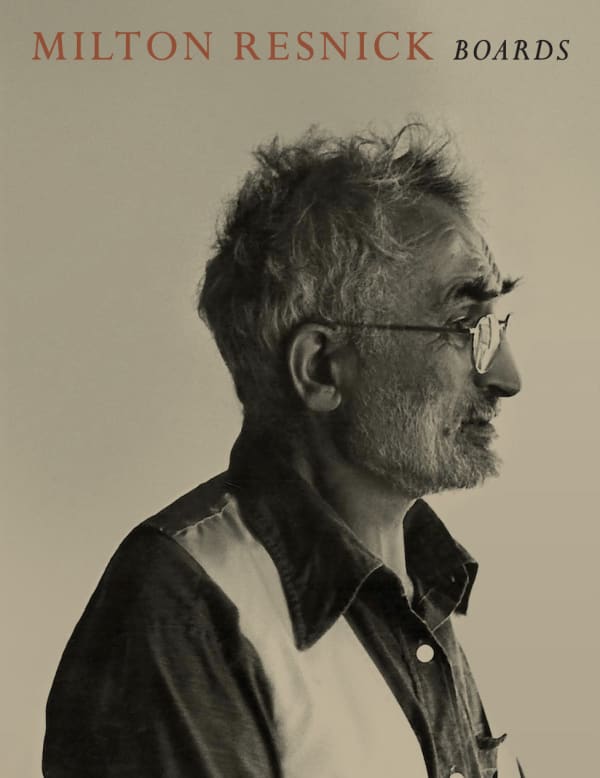Le Tableau: French Abstraction and its Affinities curated by Joe Fyfe
-
Overview
LE TABLEAU
In Achim Hochdörfer's article in the February 2009 Artforum entitled "A Hidden Reserve: painting from 1958 to 1965," the author names a number of painters included in this exhibition, "Whose practices are rich with implication." Le Tableau, continuing the conversation begun by Hochdörfer, attempts to expand his time frame historically, with a particular focus on the contribution of French abstraction from the post-war era through the present. There has been a longstanding rejection of French painting due to American triumphalism and a misplaced sense of competition by artists and critics of all stripes. French painting now seems timely in that the identifiably American notion of the "flatbed picture plane"appears banalized, having exhausted most options left for abstraction. Here, the emphasis is on the particular contributions made by painters identified with France and their exploration of the paintings' physical facticity, of surface as a "thickness," and/or other complexities of painted two-dimensionality. "Le Tableau" is a term commonly used by French painters and theorists involved in an interrogation of what constitutes the condition of the painting and/or of the pictorial. In the interest of a broad selection of French painting since WWII and contemporary works from Britain, the U.S. and elsewhere that is perceived as having parallel concerns, works have been included that some might consider more peinture than tableau. Much of the work selected places emphasis on the material means and/or structure of painting as a form or figure. Writing on post-war French painting, Clement Greenberg criticized "their surfaces with buttery paint and films of oil and varnish."i His observation was indicative of French paintings' continuance of tradition, but also of a desire to think and work with the givens of the conventional painting's complexity. This contrasts with Greenberg's dictum involving flatness, "purity" and a priori American reading of the painting as a tabula rasa or virginal plane. Artists associated with the Ecole de Paris in the period Greenberg was writing (1953) such as Fautrier, Hartung, and Riopelle used the aforementioned picture-making substances to negate the traditionally resolved painting. These French contemporaries of the Abstract-Expressionists were involved in a dismantling of the picture-object that at moments resembled an evisceration of the very body of the painting. This differs from the American project that tended to reduce painting to a single trope. (Still: the palette-knifed passage, Pollock: skeins of spatter, Rothko: sfumato, etc.). In a paper delivered at the Courtauld Institute on French artisticii practice the painter Mick Finch translated a fragment of a Hubert Damisch textiii on how Dubuffet "liked working in the thickness of the ground—I mean the tableau—to reveal what is beneath: scratching the paper, incising and beating up the substance, skinning it and whipping it up to reveal layers below." Finch cites this description as a working of the surface as a "material entity in itself." This negation of the authority of the painting can be seen to reaffirm the haptic connection with the viewer. Jean Fautrier wrote, "in front of a painting that we like completely, there is a physical need as well as its fulfillment."iv Not dissimilar is Samuel Beckett's paradoxically recuperative practice that undermined conventions of language and representation. Beckett viewed language as "a veil that must be torn apart in order to see what is behind it."v Later works included have a more formalized approach to practicing the tableau and might be best contrasted with the American orientation by using an example outside of painting per se: nearby the gallery, on opposite corners of 19th Street and the West Side Highway, sit two almost exactly contemporary buildings of not incomparable height and dimension. The Frank Gehry building on the southwest corner is immediately recognizable, branded with Gehrys' look of twisting & morphing walls. The patterned, semi-transparent glass surface of the building is general throughout the exterior. As the building meets the street there exists a kind of vacancy. It has a strong, yet oddly holographic presence in its tenuous acknowledgement of its support, the urban ground. Across the way the Nouvel building has a less trademarked look but a more complex interaction with the street. The exchange that takes place between inside and outside has been considered. The exterior structure doubles itself, extending from the main body of the building. Questions of interior/exterior, depth of the window walls and mass is collected in combinations of variations. Nicolai Ouroussoff wrote that "...the punched-out windows and ragged corner also suggest an erosion of the boundary between the public life of the street and the guarded, private realm inside."vi Applied to painting, the French/continental definition of the surface of the painting is a transitional site, a retinal, conceptual, haptic, situation that the viewer moves through, the way the pedestrian moves into the body of the Nouvel building from the street. (The painter Simon Hantaï, writing on his own painting, noted how "The canvas ceases to be a projection screen, becomes a material, cutting within itself, etc.").vii One reads the Nouvel building part-to-whole more slowly as opposed to the speedy, signatory acknowledgement of the Gehry building.
Jean Fautrier wrote that he wanted to "dynamite" the painting. Fautrier's facture seems to thwart the expectations of the viewer. As if the tableau were a mattress, he unstuffs it, piling thickly ridged plaster on the surface of his paper-covered canvas and coloring it with transparent liquid media. The background seems to bloat while the figuration melts across it in thin, candy-colored washes, a derisory artifice. Hans Hartung amalgamated various contradictory methods, such as his tendency to color only the background plane and impose contour lines or clusters of studied brushstrokes or spatter over it, scoring the paint when wet and scratching into dark stains. There remain various drying charts in his studio of generously laid down oil pigment onto which Hartung incised long curves. The charts give indication of the quality of line produced by various states of dryness, 15 minutes, 30 minutes, etc. Hartung, like the painter Jonathan Lasker, was a great rehearser. His studio studies indicate the determination to craft a painting towards a slower perception of depth of surface. Jean-Paul Riopelle, after examining a painting by Jackson Pollock, said, "Far from sharing a common cause, we are directly opposed."viii Riopelle's densely palette-knifed, obdurate, multifaceted tableaus were far away from the lyric impressionism of Pollock. Riopelle took the greasy, full spectrum of artist's oil paint, and trapped inside the material limitations of recalcitrant whites, transparent emeralds, ivory blacks and other difficult, unpromising compounds, built a continuous surface. Interlocking planes dominant in the compositions of Serge Poliakoff's tonally modulated, heavily reworked planes are so elegantly honed that they seem to be two-sided, more like shards than painted passages. Ellsworth Kelly, who practiced in Paris early in his career, most likely developed an awareness of Poliakoff's relief-like, organic/geometric leaf shapes, their strong deliberative color and quiet impersonality are much in evidence in Kelly's relief pictures. The aforementioned painters were considered part of the movement variously referred to as Informel or Tachism—painting in absence of any premeditation, conception or approach—that dominated Paris in the 1950s & early '60s where Joan Mitchell resided and maintained a dialogue with its artists. Informel reconfigured the painting through a particular attentiveness to its inherent structural characteristics and materiality. The tesseral gathering of Mitchell's brushstrokes, like Riopelle and Poliakoff, demonstrate her conversance with their aims, as does Mitchell's consistency in maintaining an exposure of the raw canvas support. Mitchell can be seen as an insouciant semiotician of the painterly mark, collecting examples from paintings past and present as she carefully disorders them upon the canvas in dry array. Milton Resnick, an American immigrant who spent time in Paris and befriended the Tachist visionary, Wols, had a ruminative, grasping painterliness that seemed to reveal itself as an outgrowth of the ground. Resnick was the earliest of the abstract expressionists to acknowledge Monet. He saw the ugliness of the impressionist painters' brushmarks as prescient. Similarly, the heaviness of Louise Fishman's rusticated gestural marks and resulting surface richness impart an odd efflorescence, produced from an intuition that what once was expressionist facture could become intimist, according to one's attitude. Fishman's particular success comes from within proscribed limits but evidences the means at arriving at an encompassing and complete statement. Martin Barré was originally considered a part of "abstraction lyrique," but more quickly absorbing the lessons of the work of Yves Klein than his contemporaries, he began an investigation of the objective reality of the picture-object, the mark's contextual relation to the field and the exposure of the support. Barré was preoccupied with the bonding of surface incident to ground, and his sprayed works can be seen as the mark that most economically bonds figural gesture to textural support, compounding the comprehension of surface dimension. The American painter Kimber Smith, a Paris resident for approximately half of his painting career was of the same generation as his close colleague Joan Mitchell. Smith's work distinguishes itself by its feathery touch, economy of means, clarity of construction and bright color. His vocabulary of quasi-geometric delineations, squeezed-from-the-tube linear meanderings and brushed, notational, and incomplete forms, defied category. Despite a lack of consistent gallery representation or critical support when he lived in Paris and later in New York, his work shows great inner strength and creative self-confidence. Revisionist narratives of art history related to abstract painting in the 60s and 70s have already begun to assert the importance of his contribution.
The perception of the tableau as an object with an imbedded, inimitable character is yoked to its status in an enlarged field. The "Supports/Surface" group worked mostly in Nice (as did Matisse, whose late work continues on in them). Based partially on theories derived from Chairman Mao's red book and seemingly perversely taking cues from Clement Greenberg's 1962 essay "After Abstract Expressionism" where he observed that "more and more of the conventions of the art of painting have shown themselves to be dispensable…thus a stretched or tacked-up canvas already exists as a picture—though not necessarily as a successful one... Claude Viallat, one of the founders of this movement, undermined ground and field in favor of an ecumenical view of the painting. He often would unfurl his hand-painted work on the beach or over a cliff. He discarded the stretcher entirely, pinning his works to the wall, permitting them to hang like banners or draped over architecture. For Viallat, the cloth support was metaphorically, the fabric of society. His painting surface was often lengths of commercial yard goods: tablecloths, draperies or awnings. In addition, his trademark kidney shaped pattern, though it has no particular geographic associations, lent itself to a wide range of decorative motifs. The entire "nomadic look" of this work was a very direct way of including the art of many cultures and by turn enfolding disparate cultures into those of the industrialized world via the expanded readings of the tableau. The painter Christian Bonnefoi called the tableau "an underlying, non-appearing structure that is masked by the stylistic successions of painting."ix In the painter Juan Uslé's work a variegated decorousness intertwines style and process. Uslé betrays a flowing hand beneath various paint-applying tools performing the curious feat of seeming to simultaneously adhere to and remove from the virgin canvas a series of twists, ripples and ribbons of hue and shade. Bernard Piffaretti begins by vertically bisecting the canvas with a painted line; on one side of which he paints a generic abstract motif that he then copies to the other side. His duplication involves not the painting as copy but the copy as painting. Piffaretti has said that his definition of the tableau goes back to the origin of the word, tabula, table in Latin. "You move things around on a table arbitrarily, without necessity…the stuff is just there, ready to be acted on"x implying that the painting is a pre-existing state. Katy Moran organizes her small paintings, done in acrylic, as style-as-content abstractions of antique oil sketches. Moran's diptych shares in aspects of Piffaretti's painting in its doubling of a similarly realized quasi-landscape in order to de-emphasize the authority of the unique painted motif. Contemporary investigations of the tableau conform to Foucault's notion of the dispositif; the painting conscious of itself as an apparatus that conducts cultural and power relationships within the social structure. Miquel Mont has stated an awareness of art materials as the product of workers and sees part of his practice as being a mediator between them and the viewer. Experiences in the medium of film accompany him into his present practice of dismantling and reordering the viewer's sequential awareness of the painting object. In the late '90s, Mont began the "Peau" series (the title refers to the skin or peel of the painting), which involved substituting thick sheets of plywood for traditional canvas. In some cases he drilled regularly spaced holes (redefining the drawing mark) and filled them to overflowing with acrylic paint. The currently shown work lets the empty space, a rhythmical repetition between the parts and the posterior wall, form an important component. Sarah Rapson builds up thick slabs of papier-mâché over cloth supports stretched on wooden frames. The paper she uses is exclusively from old art newspapers. Her surfaces are then rubbed with paint to a monochrome finish to form a contemplative painting-object. Rapson underlines the dichotomy between the "humble" physicality of the painting, its value as a transcendental, almost religious icon and its monetary value. Absenting herself from moral judgment, Rapson is instead interested in what value that is placed on intellectual labor, and how this differs from the ancient Christian elevation of art and the contemporary system based on monetary "worth." Similarly, Joe Fyfe (this writer) accesses a diverse coloristic and material palette originated in fabric markets in Asia and elsewhere. Making paintings with purchased colored material, the body and its relationship to the picture object are of concern as is cloth as a metaphor for shelter and dress in society. Compositional tropes from known sources in geometric and post-painterly abstraction are often utilized as well as chance intersections of pictorial incident derived from the ad hoc architecture of cities in the developing world. In order to reconfigure standard readings, there is an emphasis on the immediate physical facticity of cloth as structure and geometry as tactility. Jean-François Maurige has also been working with commercially produced cloth for twenty years. In a gesture towards the belief in the inherent sufficiency of limited artistic choices, Maurige has made it his practice to paint on a commercially manufactured bright red canvas. A product of ideas of arbitrary restriction originally generated by BMPT and Support/Surface Maurige established a procedure of white paint applied on the diagonal and black paint, applied vertically, picking up the texture (frottage) of his studio wall. He has said that this protocol was established in part on the basis of Matisse's "Decorative Figure on an Ornamental Ground" (1925–26) as a structural interpretation of a particular pictorial structure. Jonathan Lasker's paintings magnify the facture of gestural painting in order to critique assumptions of signification in abstraction. Seeming to address an already existent painted picture-object (which they do, being scaled-up versions of hand-size color studies) Lasker goes about slowing and thickening gestural technique to a point where a matrix of brushstrokes becomes almost independent of the ground. Lasker's deliberated techniques undermine the oppositions of physicality and construction. Charline von Heyl's working premise improvises the representation of abstraction through gestures, illusionistic passages and illustrational and graphic tropes. She sometimes adheres a glued surface of cotton sheeting over the entire support in order to suspend the paint in a space just above the canvas, not flat on the plane but deceptively foregrounded. Traces of mark, pour and gesture are often reworked into semi-abstract emblems that are cartoonish or kitschish. Von Heyl's disparate pictorial devices are deftly rendered and could possibly be interpreted as drawing, but bind to the surface by her utilization of close, tonal color. Daniel Hesidence uses a variety of methods in order to complicate the viewer's points of entrance and exit from his paintings. He is particularly fearless, like Riopelle, of twisting the illusionistic properties of oil paint into unusual states of reflexivity. Hesidence sees the painting as a place to trace gestures of identification, using paint's properties in order to evoke violence, profound spaces and body substances. His visceral paint handling, including dragged, bristly passages and brushy punctured trailings, has resonances of visionary and extreme emotional and psychological states. Cheyney Thompson has done a large series of works on various standard supports, all differently sized, all arbitrary. The photo-derived enlarged sections of the paintings' linen support are done by hand. His color decisions are based on a program corresponding to the times of day when the work is executed. The painting process is equated with wage labor. Thompson understands the painting as an object tied to an arm of industrial production that renders it a perennially duplicating event. John Zurier's painting program telegraphs viewer comprehension through the most oblique of means: that of reacting to the texture of the canvas support as an indicator of brushstroke application. Zurier understands the brushstroke to be structural, and utilizes the sign of brushy light originating in Matisse. Zurier returns it to a facticity reminiscent of Ryman but imbued with a painting-historical subtext. Richard Aldrich's practice is both reflexive and diverse, centered on the white canvas as a site of a painting-centered inquiry. His work gravitates between the poles of tabula rasa and the tableau in a number of quirky ways, addressing sundry approaches to the white ground. Aldrich will sometimes adhere cloth scraps to the surface, rhyming with the tooth of the primed canvas, or a fragment of image from a 19th century painting might be adhered to the white surface in loose approximation using a putty-colored oil paint. Another painter who bases his work in the sign-systems of pictorial history is Merlin James. His paintings, almost all smallish, gravitate between a visceral engagement with the painting object's physical structure, sometimes adding holes, hair or other relief elements, or re-stretching previously painted canvases so seams show and with a chosen image or abstract trope. James has said he "feels shallowly in experience of the world―not just the outside, the physical world, but even the emotional narrative of one's own life…with no really strong feelings of owning and being owned by history…and yet my impulse, and that of the work, is against estrangement."xi
Joe Fyfe
New York 2010
I would like to thank the readers: Anthony Allen, Svetlana Alpers, Mick Finch, Miquel Mont, Shirley Kaneda, Molly Warnocki Clement Greenberg, Art & Culture, p.124
ii Supports/Surfaces: Contexts and Issues by Mick Finch Supports/Surfaces: Critiques of Modernism Conference paper. Courtauld Institute, Saturday February 27, 1999.
iii "Fenetre Jaune Cadmium: ou les dessous de la peinture" by Hubert Damisch
iv "Jean Fautrier 1898-1964" Curtis L. Carter & Karen K. Butler Yale University Press, 2002 p. 202, Appendix E
v Beckett, letter to Axel Kuan, trans. Martin Esslin, Disjecta: Miscellaneous Writings and a Dramatic Fragment, ed. Ruby Cohn (New York: Grove Press, 1984), pp. 171-73.
vi "At the Corner of Grit and Glamour" NYT, March 14, 2010
vii "As Painting: Division and Displacement" Armstrong, Lisbon, Melville MIT Press, 2001 p. 220
viii "Riopelle: Grands Formats" p.23 Acquavella Gallery 2009
ix "As Painting: Division and Displacement" Armstrong, Lisbon, Melville MIT Press, 2001 205-207
x "Bernard Piffaretti by Joe Fyfe" BOMB 96 Summer 2006
xi James Hyde/Merlin James Journal of Contemporary Art, 1999. http://www.jca-online.com/hyde_james.html -
Selected Works
-
Publications
-
News
No news items are available relating to this exhibition.
-
Artists


